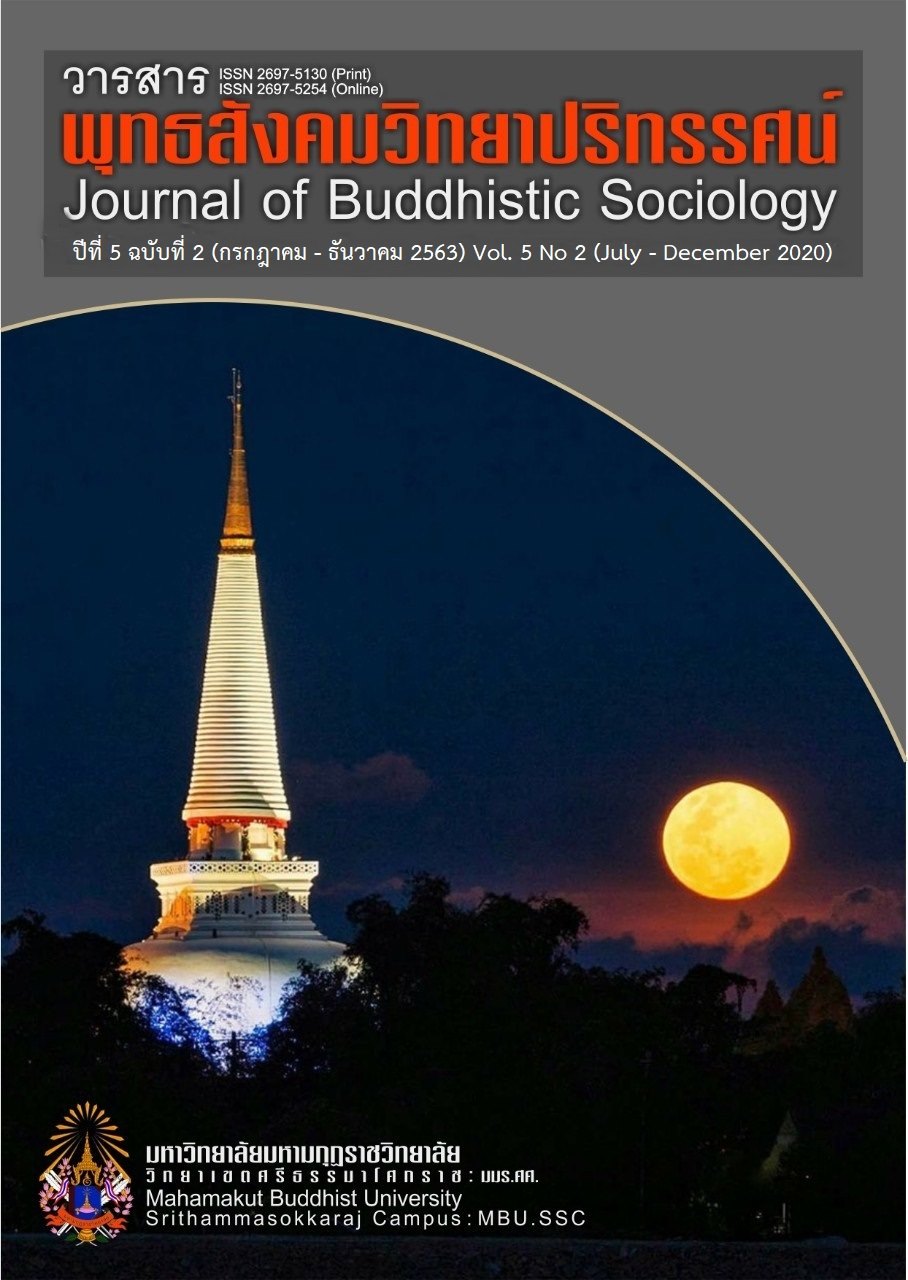การสร้างแบบทดสอบความรู้เชิงสหวิทยาการ ตามแนวคิดการเรียนรู้ในศตวรรษที่ 21 ของนักเรียนระดับมัธยมศึกษาตอนปลาย
Main Article Content
บทคัดย่อ
การวิจัยนี้มีจุดประสงค์ 1. เพื่อสร้างแบบทดสอบความรู้เชิงสหวิทยาการตามแนวคิดการเรียนรู้ในศตวรรษที่ 21 ของนักเรียนระดับมัธยมศึกษาตอนปลาย 2. เพื่อตรวจสอบความตรงเชิงโครงสร้างของแบบทดสอบความรู้เชิงสหวิทยาการตามแนวคิดการเรียนรู้ในศตวรรษที่ 21 ของนักเรียนระดับมัธยมศึกษาตอนปลาย และ 3. เพื่อสร้างปกติวิสัยของคะแนนความรู้เชิงสหวิทยาการตามแนวคิดการเรียนรู้ในศตวรรษที่ 21 โดยทำการสำรวจกับนักเรียน จำนวน 1,032 คน ได้มาด้วยการสุ่มแบบหลายขั้นตอน เครื่องมือการวิจัยเป็นแบบทดสอบความรู้เชิงสหวิทยาการตามแนวคิดการเรียนรู้ในศตวรรษที่ 21 ของนักเรียนระดับมัธยมศึกษาตอนปลาย โดยการวิเคราะห์องค์ประกอบเชิงยืนยัน ด้วยโปรแกรม Lisrel 8.7
ผลการวิจัยพบว่า
1. แบบทดสอบความรู้เชิงสหวิทยาการตามแนวคิดการเรียนรู้ในศตวรรษที่ 21 ของนักเรียนในระดับมัธยมศึกษาตอนปลาย ประกอบด้วย 5 ด้าน ประกอบด้วยข้อคำถามจำนวน 20 ข้อ ซึ่งได้แก่ ความรู้เกี่ยวกับโลก ความรู้เกี่ยวกับการเงิน เศรษฐศาสตร์ ธุรกิจ และการเป็นผู้ประกอบการ ความรู้ด้านการเป็นพลเมืองที่ดี ความรู้ด้านสุขภาพ และความรู้ด้านสิ่งแวดล้อม ค่าความเที่ยงทั้งฉบับ เท่ากับ .710
2. การตรวจสอบความตรงเชิงโครงสร้างของแบบทดสอบความรู้เชิงสหวิทยาการตามแนวคิดการเรียนรู้ในศตวรรษที่ 21 ของนักเรียนในระดับมัธยมศึกษาตอนปลาย ทำการพิจารณาค่าน้ำหนักของตัวแปรแฝงทั้ง 5 ตัวจากค่าสัมประสิทธิ์คะแนนมาตรฐานของน้ำหนัก ปรากฏว่า ความรู้เกี่ยวกับโลก และความรู้เกี่ยวกับการเงิน เศรษฐศาสตร์ ธุรกิจ และการเป็นผู้ประกอบการ มีความสำคัญมากที่สุด ซึ่งมีความตรงเชิงโครงสร้างจากการวิเคราะห์องค์ประกอบเชิงยืนยันอยู่ในเกณฑ์ดี
3. ปกติวิสัยของแบบทดสอบความรู้เชิงสหวิทยาการตามแนวคิดการเรียนรู้ในศตวรรษที่ 21 ของนักเรียนในระดับมัธยมศึกษาตอนปลาย จำแนกเป็น 3 ระดับ คือ กลุ่มสูง มีช่วง
สเตไนน์ อยู่ที่ช่วง 7-9 กลุ่มปานกลาง มีช่วงสเตไนน์ อยู่ที่ช่วง 4–6 และกลุ่มต่ำ มีช่วงสเตไนน์ อยู่ที่ช่วง 1-3
Article Details
เอกสารอ้างอิง
พูลพงศ์ สุขสว่าง. (2557). หลักการวิเคราะห์โมเดลสมการโครงสร้าง. วารสารมหาวิทยาลัยนราธิวาสราชนครินทร์, 6(2).
สมนึก ภัททิยธานี. (2558). การวัดผลการศึกษา (พิมพ์ครั้งที่ 10). กาฬสินธุ์: ประสานการพิมพ์.
Creswell, J. W. (2012). Planning, Conducting, and Evaluating Quantitative and Qualitative Research (4th ed.). University of Nebraska–Lincoln.
Herbert W. Marsh. (1985). Application of Confrimatory Factor Analysis to study of self concept. The American Psysichological Assosiation, 97(3), 562-582.
Hooper, D., Coughlan, J., & Mullen, M. R. (2008). Structural Equation Modelling: Guidelines for Determining Model Fit. The Electronic Journal of Business Research Methods, 6, 58.
Kelloway, E.K. (2014). Using Mplus for Structural Equation Modeling: A Researcher’s Guide,Sage Publications. Thousand Oaks: CA.
LoBiondo-Wood, G., & Haber, J. (2014). Nursing research: Methods and critical appraisal for evidencebased practice. (8 ed). Mosby Elsevier.
Lomax, R. G., & Schumacker, R. E. (2004). A beginner's guide to structural equation modeling. Psychology press.
Mehrens, W. A., & Lehmann, I. J. (1991). Measurement and evaluation in education and psychology (2nd ed.). New York: NY: Houghton Mifflin Company.
Polit, D. F., Beck, C., & Owen, S. V. (2007). Is the CVI an acceptable indicator of contentvalidity? Appraisal and recommendations. Research in Nursing & Health, 30(4), 459-467.
Schumacker, R. E.,& Lomax, R. G. (2010). A beginner’s guide to structural equation modeling (3rd Edition). New Jersey: Lawrence Erlbaum Associates.
The Partnership for 21st Century Skills. (2011). Framework for 21st Century Learning [Online] available. Retrieved Junuary 21, 2015, from http://www. P.21.org


